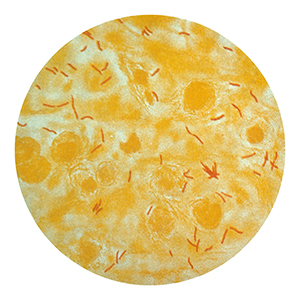Comparison of efficacy of bedaquiline and moxifloxacin in drug resistant pulmonary tuberculosis. A prospective observational study

All claims expressed in this article are solely those of the authors and do not necessarily represent those of their affiliated organizations, or those of the publisher, the editors and the reviewers. Any product that may be evaluated in this article or claim that may be made by its manufacturer is not guaranteed or endorsed by the publisher.
Authors
Drug-resistant tuberculosis remains a major public health concern in many countries. We compared the efficacy and safety of bedaquiline plus optimized background regimen (Bdq+OBR) with high dose moxifloxacin and optimized background regimen (Mfx(h)+OBR) for the treatment of patients with multidrug-resistant tuberculosis with additional resistance to fluoroquinolones. In this prospective observational study, newly diagnosed cases of multidrug-resistant tuberculosis with additional resistance to fluoroquinolone were enrolled. They received either Bdq+OBR or Mfx(h)+OBR and were followed up for six months. The sputum culture conversion rate at the end of six months and the time to culture conversion in each group were studied. The safety profile of both regimens was also studied. The sputum culture conversion was achieved in 41 patients (100%) in the Bdq+OBR group and 36 patients (87.8%) in the Mfx(h)+OBR group at the end of 6 months. The mean time to culture conversion was found to be 3.10±0.8 months in the Bdq+OBR group and 3.32±0.9 months in the Mfx(h)+OBR group. Mortality was 6.8% in the Bdq+OBR group and 10.8 % in the Mfx(h)+OBR group at 6 months. Raised serum lipase and dark discolouration of skin were significantly more common in the Bdq+OBR group while vomiting and ototoxicity were more common in the Mfx(h)+OBR group. Bdq+OBR was associated with higher success of sputum culture conversion at 6 months and faster sputum culture conversion rate as compared to the Mfx(h)+OBR.
How to Cite

This work is licensed under a Creative Commons Attribution-NonCommercial 4.0 International License.






